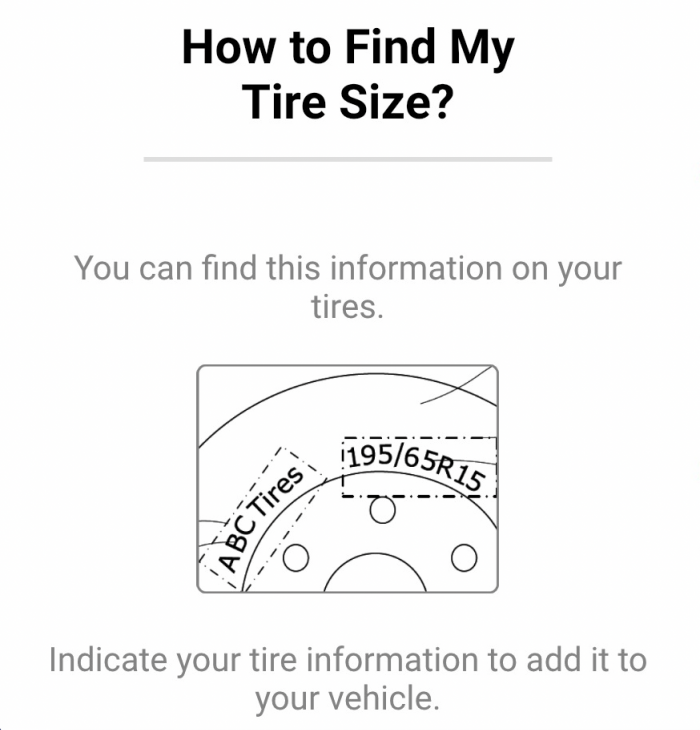Introducing the Art of Tire Selection: A Comprehensive Guide to Choosing the Right Tires for Your Vehicle
When it comes to maintaining your vehicle, tire selection is one of the most crucial aspects to consider. The right set of tires can enhance your car’s performance, improve fuel efficiency, and keep you safe on the road. In this comprehensive guide, we will cover everything you need to know about tire selection, including premium and budget tire options, selecting the right tires for different types of vehicles, seasonality, terrain, and much more. By the end of this guide, you’ll be well-equipped to make an informed decision when it comes to selecting the perfect tires for your vehicle.
Understanding the Basics of Tire Selection
Before diving into the details of tire selection, it’s essential to understand some basic tire terminology and concepts. Tires come in various sizes and types, each designed to meet specific driving needs and conditions. The sidewall of a tire provides crucial information, including the tire’s size, load-carrying capacity, and speed rating. Familiarizing yourself with this information will make the tire selection process much more manageable.
Decoding the Sidewall: Understanding Tire Information for Smarter Tire Selection
To make an informed tire selection, it’s essential to understand the information found on the tire’s sidewall. This data, such as tire size, load-carrying capacity, and speed rating, is crucial when choosing the right tires for your vehicle.
To locate the tire size, look for a series of letters and numbers on the tire’s sidewall.  This alphanumeric code represents the tire’s dimensions and performance specifications. For example, a tire size of “P215/60R16” can be broken down as follows:
This alphanumeric code represents the tire’s dimensions and performance specifications. For example, a tire size of “P215/60R16” can be broken down as follows:
“P” indicates a passenger vehicle tire.
“215” is the tire’s width in millimeters.
“60” is the aspect ratio, or the tire’s height as a percentage of its width.
“R” stands for radial construction.
“16” is the diameter of the wheel in inches that the tire is designed to fit.
Other crucial information found on the sidewall includes the load-carrying capacity and speed rating, which are typically represented by a two or three-digit number followed by a letter. For example, a load index of “95V” means that the tire can carry a maximum load of 1,521 pounds (95) and has a speed rating of up to 149 mph (V).
By understanding the information on the tire’s sidewall, you can ensure you select tires that meet your vehicle’s requirements and provide optimal performance and safety.
Locating Tire and Loading Information: The Key to Accurate Tire Selection
In addition to understanding the information on the tire’s sidewall, it’s crucial to be aware of your vehicle’s tire and loading information for accurate tire selection. This data can typically be found on a placard or sticker located inside the driver’s side door jamb, fuel door, or glove compartment.

The tire and loading information includes the recommended tire size, tire pressure, load-carrying capacity, and speed rating specific to your vehicle’s make and model. By referring to this information, you can ensure that your tire selection is in line with the manufacturer’s recommendations, which is essential for maintaining optimal performance, safety, and fuel efficiency.
Moreover, this information is particularly important when selecting tires for a vehicle with unique requirements, such as heavy towing or carrying heavy loads. The recommended tire pressure, for example, can vary based on the weight distribution of the vehicle and the load it’s carrying. Properly inflated tires not only improve fuel efficiency but also reduce tire wear and the risk of tire failure.
Consulting your vehicle’s tire and loading information is a critical step in the tire selection process. By adhering to the manufacturer’s recommendations, you can ensure that your chosen tires are suitable for your vehicle’s needs and provide the best possible performance, safety, and longevity. As a result, you can confidently hit the road with the peace of mind that your tires are an ideal match for your vehicle.
Premium vs. Budget Tires: Which One Is Right for You?

When it comes to tire selection, there’s often a debate between choosing premium or budget tires. Premium tires usually come with a higher price tag, but they also offer superior performance, longer tread life, and better warranties. Budget tires, on the other hand, are more affordable but may not provide the same level of performance or durability.
Ultimately, the choice between premium and budget tires depends on your driving needs, budget, and personal preferences. If you prioritize performance, safety, and longevity, premium tires may be worth the investment. However, if you’re looking for a more cost-effective solution, budget tires can still provide reliable performance under normal driving conditions.
Choosing the Right Tires for Different Types of Vehicles
Tire selection varies depending on the type of vehicle you drive. In this section, we’ll discuss how to choose the right tires for cars, trucks, and SUVs.

🚗 Cars
For most cars, all-season tires are a popular choice due to their versatility and performance in various weather conditions. When selecting tires for your car, consider factors such as your driving habits, the local climate, and the specific performance attributes you’re looking for (e.g., handling, wet traction, or ride comfort).
🛻 Trucks
Truck tires are designed to handle heavier loads and more rugged conditions than car tires. When selecting tires for your truck, consider factors such as load-carrying capacity, off-road capabilities, and the type of terrain you typically encounter. All-terrain and mud-terrain tires are popular options for trucks that frequently go off-road, while highway tires provide a smoother and more fuel-efficient ride for predominantly on-road driving.
🚙 SUVs
SUVs often require a combination of car and truck tire attributes, making tire selection slightly more complex. When selecting tires for your SUV, consider factors such as load-carrying capacity, on-road versus off-road performance, and the specific performance attributes you desire. All-season, all-terrain, and highway tires are all viable options for SUVs, depending on your driving needs and preferences.
Considering Seasonality and Terrain in Tire Selection
One of the most critical factors in tire selection is understanding how seasonality and terrain can impact your tire choice. Depending on where you live and the types of roads you drive on, you may need to consider different tire options to maximize safety and performance.

Seasonal Tires
Seasonal tires are designed to perform optimally during specific weather conditions. The three primary categories of seasonal tires are:
Summer tires ☀️
These tires provide excellent traction and handling on wet and dry roads during warmer months. However, they’re not suitable for cold temperatures or snowy conditions.
Winter tires ❄️
Designed for cold temperatures and snowy or icy conditions, winter tires offer improved traction and handling in harsh winter weather. They’re not recommended for use in warmer months, as their performance decreases significantly.
All-season tires ☀️❄️🍂🌱
As the name suggests, these tires are designed to provide reliable performance in various weather conditions. While they may not offer the same level of traction as dedicated summer or winter tires, they’re a versatile option for drivers who experience mild seasonal changes.
Terrain Considerations
The type of terrain you typically drive on also plays a significant role in tire selection. Common terrain types include:
Highway
For drivers who predominantly travel on well-paved roads, highway tires offer a smooth, comfortable ride and good fuel efficiency.
Off-road
Off-road tires are designed for drivers who frequently traverse unpaved surfaces or rough terrain. All-terrain and mud-terrain tires provide better traction, durability, and puncture resistance than standard tires in off-road conditions.
Mixed-use
For drivers who encounter a combination of paved and unpaved roads, all-terrain tires offer a balance of on-road comfort and off-road capability.
Key Factors to Consider When Selecting Tires
When choosing the right tires for your vehicle, consider the following factors:

Driving habits
Consider how you use your vehicle (e.g., daily commuting, long road trips, off-road adventures) and select tires that align with your driving needs.
Climate
Choose tires that perform well in your region’s typical weather conditions, whether that’s hot, cold, wet, or snowy.
Performance attributes
Determine which performance attributes (e.g., handling, traction, ride comfort, fuel efficiency) are most important to you and choose tires that excel in those areas.
Budget
Set a budget for your tire purchase and weigh the benefits of premium versus budget tire options within that price range.
Warranty
Review the warranty coverage offered by different tire manufacturers, as this can impact the overall value of your investment.
How to Ensure a Proper Tire Fit
A proper tire fit is crucial for maintaining your vehicle’s performance, safety, and fuel efficiency. When selecting new tires, ensure that they are compatible with your vehicle’s make, model, and year. Additionally, consult your vehicle owner’s manual for the recommended tire size, load-carrying capacity, and speed rating.
Ensuring the proper tire fit is a critical aspect of tire selection, and a Treads Tire Subscription offers a seamless and convenient solution to guaranteeing the perfect tire fit for your vehicle. When you sign up for a Treads Tire Subscription, their intuitive app takes care of the tire fit for you. All you need to do is upload your car and the app will intelligently suggest tires that are compatible with your vehicle’s specifications. This eliminates the need for manual cross-referencing and ensures that your chosen tires align with your vehicle’s requirements as per the manufacturer’s recommendations.
Additionally, Treads’ customer support team is readily available via live chat to assist you with any queries or concerns you may have regarding tire fit. Their knowledgeable agents can guide you through the selection process and provide personalized recommendations, ensuring that you make the best choice for your vehicle.
In short, a Treads Tire Subscription simplifies the tire fit aspect of tire selection, allowing you to focus on other important factors such as budget, performance attributes, and driving conditions. With Treads, you can trust that your tires are not only the perfect fit for your vehicle but also tailored to your specific driving needs, delivering an unparalleled driving experience.
Making Tire Selection Effortless with Treads Tire Subscription
Tire selection can be a complex and time-consuming process. However, Treads Tire Subscription makes it easier than ever to find the perfect tires for your vehicle. By signing up for a Treads tire subscription, all you need to do is download the Treads app, upload your car’s information, and choose a subscription plan that fits your budget. The app intelligently provides tire suggestions based on your specific vehicle, taking the guesswork out of tire selection.
Treads also offers live customer service agents available via chat to help with any questions you may have, making the tire selection process even more convenient and straightforward. With Treads, selecting new tires has never been easier.
Closing Thoughts: Mastering Tire Selection for a Safer and More Efficient Driving Experience
Tire selection is an essential aspect of vehicle maintenance that impacts safety, performance, and fuel efficiency. By understanding the basics of tire selection, considering factors such as premium versus budget tires, vehicle type, seasonality, terrain, and key performance attributes, you can make an informed decision when choosing the right tires for your vehicle.
Additionally, ensuring a proper tire fit and consulting your vehicle owner’s manual for recommended specifications is crucial to maintaining optimal performance. And if you’re looking to simplify the tire selection process even further, consider signing up for a Treads Tire Subscription, which makes finding the perfect tires for your vehicle as easy as a few taps on your smartphone.
In the end, taking the time to carefully consider your tire selection will not only improve your driving experience but also contribute to the longevity of your vehicle and your safety on the road. With the information provided in this comprehensive guide, you’re now well-equipped to make an educated decision when it comes to selecting the perfect tires for your vehicle. Happy driving!
Let’s Connect!
Let us know if you sign up for a tire subscription from Treads. We’d also love to hear about any experiences you have had with regard to tire selection. Connect with us on our socials: Facebook, Instagram, or TikTok. We want your 🚙 🛞 stories!
Also for more information about a Treads Tire Subscription download the Treads App in the App Store or in Google Play and live chat with a team member with any questions you may have. We are always happy to help!







